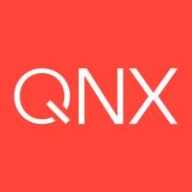

Oracle Solaris and QNX Neutrino are both operating systems competing in the enterprise market. Oracle Solaris holds the upper hand with its extensive support and robust enterprise features, making it suitable for large-scale environments. QNX Neutrino is preferable for real-time and embedded system applications due to its reliability and real-time processing capabilities.
Features: Oracle Solaris has advanced security measures, scalability for enterprise applications, and tools such as DTrace for diagnostics and ZFS for efficient file management. QNX Neutrino uses a microkernel architecture offering exceptional real-time performance, reliability, and a small footprint, which are crucial for mission-critical embedded applications.
Ease of Deployment and Customer Service: Oracle Solaris simplifies deployment via extensive documentation and well-established enterprise support, making it suitable for large-scale implementations. In contrast, QNX Neutrino is designed for streamlined deployment within embedded systems and provides focused support, favoring its use in specialized applications.
Pricing and ROI: Oracle Solaris typically involves higher initial costs reflecting its comprehensive feature set for enterprise infrastructure, providing a solid ROI for large deployments. QNX Neutrino usually involves lower costs when deployed in smaller, mission-critical systems, enhancing ROI through reliability and reduced maintenance. While Solaris is seen as an investment in enterprise robustness, QNX offers cost-efficiency for specific embedded needs.

Oracle Solaris is a trusted business platform that provides consistent compatibility, is simple to use, is always secure, and is designed to help you run your modern and legacy enterprise applications. The solution is the most recommended enterprise operating system for Oracle Database and Java applications and is engineered for large-scale enterprise deployments.
Oracle Solaris Features
Oracle Solaris has many valuable key features. Some of the most useful ones include:
Oracle Solaris Benefits
There are many benefits to implementing Oracle Solaris. Some of the biggest advantages the solution offers include:
Reviews from Real Users
Below are some reviews and helpful feedback written by PeerSpot users currently using the Oracle Solaris solution.
A CEO at a computer software company says, “The most valuable feature is virtualization. They have attained virtualization and it's quite simple to create the Oracle Solaris zones. The solution is quite powerful. Oracle Solaris is great due to the fact that it actually is meant for high-end servers. The high availability is great. You can clone and you can do quite a number of things with them. There's also the ZFS File system which is very good. Is one of the best file systems that there is.”
Diego A., Oracle ACE - Specialized in Systems Technologies at Telecom Argentina, mentions, “The most valuable features for me are virtualization (Containers, Zones, Security, PDOM's, LDOM's) and Performance, ZFS, Debugging with Dtrace.”
A Service Manager at a tech services company expresses that the solution is “Stable, scalable, and has easy installation.”
PeerSpot user Marcel H., Oracle ACE Director "Solaris," CEO, Enterprise Consultant at JomaSoft, explains, “Solaris includes two virtualization solutions: LDoms for SPARC and Solaris Zones. Both solutions can be combined to create private clouds. Solaris Zones is ideal to separate applications and to migrate from older to current hardware. LDoms is very efficient because it uses the hardware hypervisor of the SPARC servers. Both technologies increase Security, because they separate the applications from each other. Using the Security Compliance Framework we are sure the systems are set up properly.”
Shafiq K., Senior Manager IT Operations at a financial services firm, states, “The reliability of the solution is excellent. The security has been very good overall. We've found the solution to have good availability. The backup capabilities are quite good. The solution has proven to be quite stable so far. The product can scale. The solution is 100% free to use. It doesn't cost a company anything as it's embedded in the hardware.”
QNX Neutrino, a real-time operating system from BlackBerry, delivers robust performance for embedded systems across industries like automotive, aerospace, and telecommunications.
QNX Neutrino is designed for high-performance embedded applications, providing deterministic responses that are essential in systems where timing is critical. Its microkernel architecture ensures maximum security and reliability, making it a trusted choice for developing safety-critical applications. QNX Neutrino's ability to support multitasking and asymmetrical processing adds flexibility, supporting resource utilization across different hardware environments.
What are the key features of QNX Neutrino?
What benefits should users look for in reviews?
In industries like automotive, QNX Neutrino powers complex systems such as Advanced Driver Assistance Systems, ensuring real-time data processing for enhanced safety. In aerospace, it supports flight control systems where reliability and timing precision are crucial. Telecommunications benefit from its scalability and fault resilience, enabling robust network infrastructure.
We monitor all Operating Systems (OS) for Business reviews to prevent fraudulent reviews and keep review quality high. We do not post reviews by company employees or direct competitors. We validate each review for authenticity via cross-reference with LinkedIn, and personal follow-up with the reviewer when necessary.